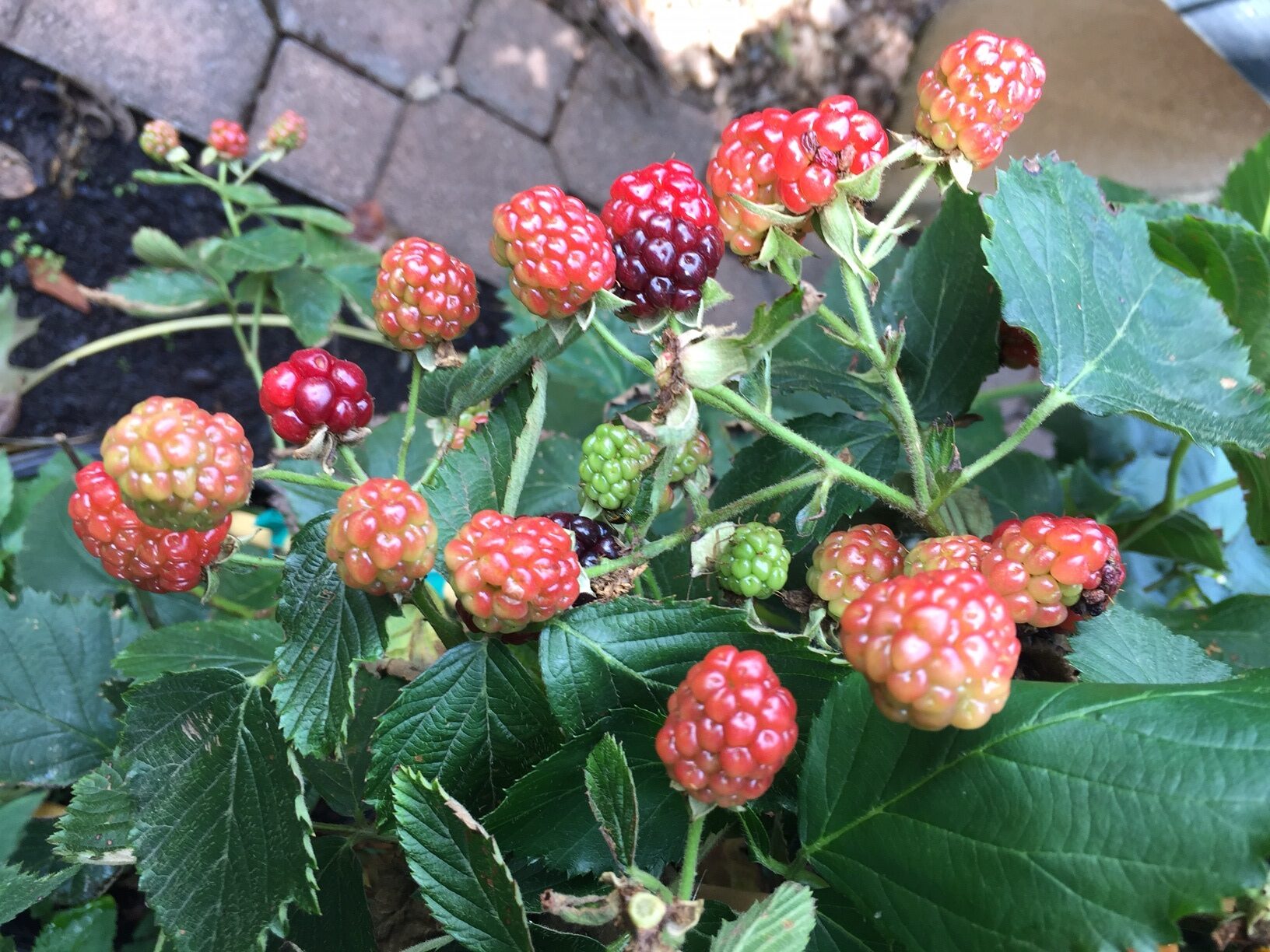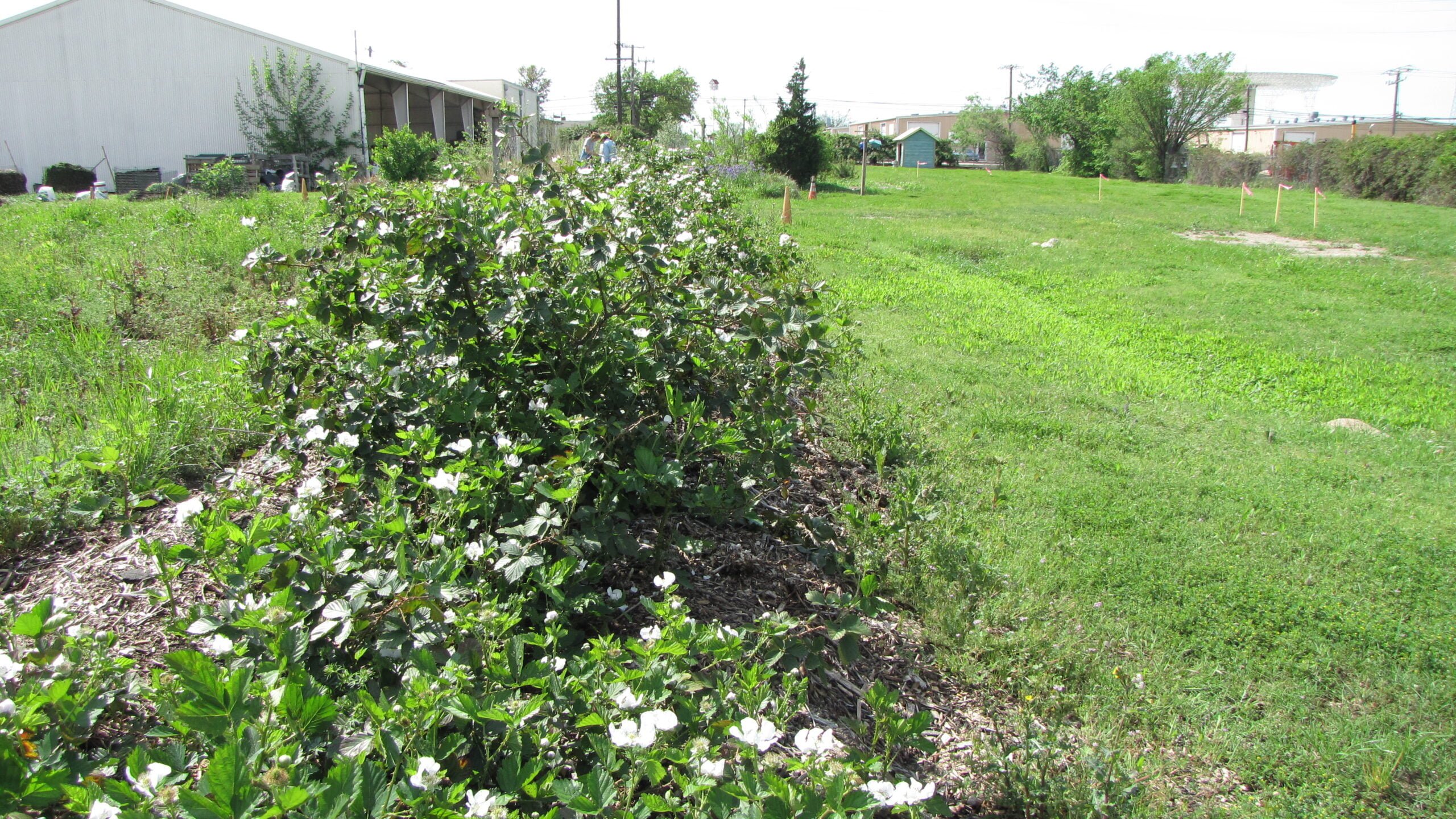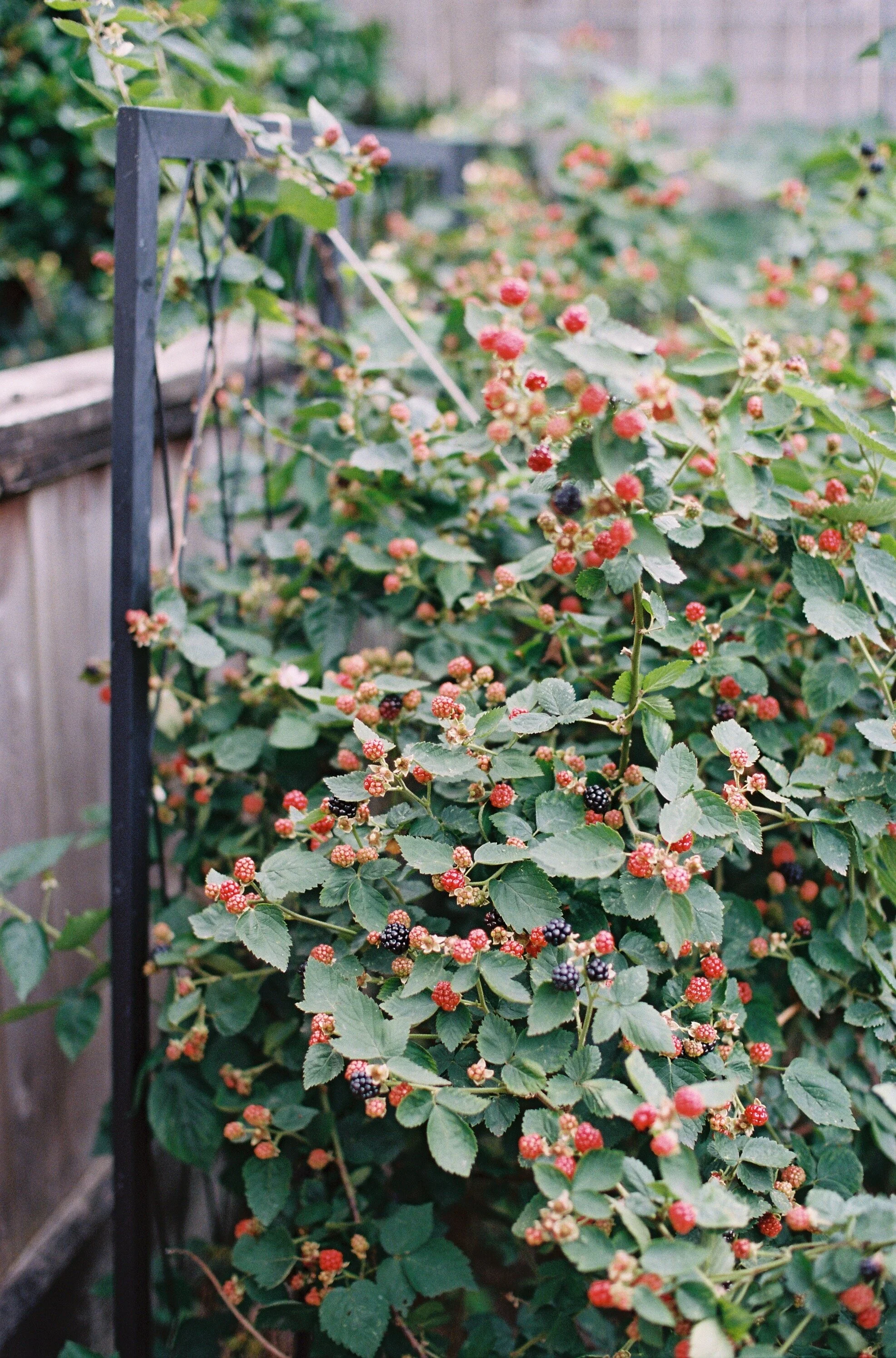If you’re a gardening enthusiast in Texas with a passion for growing your own fresh and delicious fruits, then learning how to grow blackberries in the Lone Star State is an endeavor you should consider. Blackberries, with their sweet and tangy flavor, can thrive in Texas’s warm climate, but successful cultivation requires careful attention to soil preparation, choosing the right varieties, providing the appropriate growing conditions, and proper maintenance. In this article, you will discover expert tips and techniques for successfully growing blackberries in Texas, allowing you to enjoy a bountiful harvest of these delectable berries in your own backyard.

Choosing the Right Blackberry Variety
When it comes to growing blackberries, one of the first considerations you need to take into account is the climate in your area. Blackberries thrive in different climates depending on the variety. In Texas, for example, the climate can vary significantly from region to region. Some blackberry varieties may prefer the hot and dry conditions of the southern part of the state, while others may be better suited for the milder and more humid climate in the eastern areas. Research and consult with local experts to determine the blackberry variety that will perform best in your specific climate.
Aside from considering the climate, you also need to determine the type of blackberry you want to grow. There are two main types: erect blackberries and trailing blackberries. Erect blackberries, as the name suggests, have an upright growth habit and can grow as tall as 6-8 feet. They typically require trellising for support. Trailing blackberries, on the other hand, have long canes that bend and trail along the ground. These varieties are generally more disease-resistant and may require less maintenance. Consider your available space and the level of care you are willing to provide when choosing between erect and trailing blackberries.
Another important factor to consider when choosing a blackberry variety is disease resistance. Certain blackberry varieties are more resistant to common diseases, such as anthracnose and rust. By selecting disease-resistant varieties, you can decrease the risk of your plants being affected by these diseases and potentially increase your chances of a successful harvest. Look for blackberry varieties that have proven disease resistance and are recommended for your specific region.
Preparing the Soil
Before planting blackberries, it is crucial to prepare the soil properly to provide the best growing conditions for your plants. Start by testing the soil to determine its pH level and nutrient content. Blackberries prefer soil with a pH level between 5.5 and 6.5. If the pH level is too high or too low, you may need to make adjustments by adding lime to raise the pH or sulfur to lower it.
In addition to proper pH levels, blackberries also require well-drained soil. Poor drainage can lead to root rot and other problems. To improve soil drainage, consider incorporating organic matter such as compost or aged manure into the soil. This will help to loosen heavy soils and promote better drainage.
Enriching the soil with organic matter is also beneficial for providing essential nutrients to your blackberry plants. Before planting, mix in compost or well-rotted manure to improve the soil’s fertility and structure. This will ensure that your blackberries have access to the nutrients they need for healthy growth and abundant fruit production.
Planting Blackberries
Once you have prepared the soil, it’s time to select a suitable planting site for your blackberries. Choose a location that receives full sun exposure for at least six hours a day. Blackberries need plenty of sunlight to thrive and produce a bountiful harvest. Additionally, consider the spacing requirements for the specific blackberry variety you have chosen. Different varieties may have varying recommendations for spacing between plants and rows. Providing adequate spacing will allow enough air circulation and sunlight penetration, reducing the risk of disease and promoting optimal growth.
If you have limited space or prefer to grow blackberries in containers, it is entirely possible to do so. Select a large container, at least 18 inches in diameter, to accommodate the blackberry’s root system. Ensure that the container has proper drainage holes to prevent waterlogging. Fill the container with well-draining soil and plant the blackberry as you would in the ground. Just keep in mind that blackberries in containers may require more frequent watering and fertilization.
For planting blackberries in the ground, dig a hole that is wide and deep enough to accommodate the root system of the plant. Gently place the blackberry plant in the hole, making sure that the crown of the plant (where the roots meet the stem) is level with the soil surface. Backfill the hole with soil, firming it gently around the plant. Water thoroughly after planting to help the soil settle and establish good root-to-soil contact.
Watering and Fertilizing
Watering plays a vital role in the growth and development of blackberries. Establishing a watering schedule is key to ensuring that your plants receive adequate moisture. During the first year, blackberry plants require around 1 inch of water per week. This can be achieved through a combination of rainfall and supplemental irrigation. Monitor the moisture levels in the soil and adjust your watering accordingly to prevent under or overwatering.
Applying mulch around your blackberry plants can help conserve moisture and suppress weed growth. Organic mulches, such as straw or wood chips, are ideal for blackberries as they break down over time, enriching the soil with valuable nutrients. Apply a layer of mulch, about 2-4 inches thick, around the base of the plants, taking care to keep the mulch a few inches away from the stems to prevent stem rot.
Fertilizing blackberries is important to ensure optimum growth and fruit production. Before planting, incorporate a balanced fertilizer, such as a 10-10-10 or 14-14-14, into the soil according to the product’s instructions. In subsequent years, apply a slow-release fertilizer in early spring or when new growth begins. Follow the manufacturer’s recommendations for application rates and timings to avoid overloading the plants with nutrients. Regularly monitoring the soil fertility and conducting soil tests can help you adjust your fertilization practices based on the specific needs of your blackberry plants.
Pruning and Training
Pruning blackberries is essential for maintaining plant health, preventing overcrowding, and promoting optimal fruit production. Proper pruning is particularly important for new blackberry plants to establish a strong framework for future growth.
When pruning new blackberry plants, the focus should be on training the plant to a desired shape. Remove any dead or damaged canes at the base of the plant. Select three to five of the strongest, healthiest canes to retain and remove the rest. Trim these selected canes back to a height of around 2-3 feet. This will encourage lateral branching and help the plant develop a sturdy structure.
For established blackberry plants, pruning should be done during the dormant season, usually in late winter or early spring. Remove any dead, diseased, or weak canes at ground level. Thin out overcrowded canes, leaving about 4-6 of the strongest canes per plant. Aim to maintain an open and airy canopy to allow for good sunlight penetration and air circulation.
To train blackberry canes, use a trellis system for erect varieties or allow trailing varieties to grow along a fence or other support structure. As the canes grow, gently tie them to the trellis or support using soft plant ties. This will help keep the canes upright, prevent them from sprawling on the ground, and make harvesting easier. Regularly check and adjust the ties as needed to accommodate the growth of the canes.
Protecting Blackberry Plants
Just like any other plants, blackberries can face challenges from pests, diseases, and extreme temperatures. Taking proper precautions and implementing preventive measures can help protect your blackberry plants and keep them healthy throughout the growing season.
Guarding against pests is crucial to prevent damage to the foliage and fruit of your blackberry plants. Common pests that may affect blackberries include aphids, spider mites, and fruit flies. Regularly inspect your plants for signs of infestation, such as distorted leaves, webbing, or rotting fruit. If you notice any pest activity, consider using organic pest control methods, such as insecticidal soaps or neem oil, to manage the problem.
Preventing diseases is equally important to ensure the longevity of your blackberry plants. Common diseases that can affect blackberries include anthracnose, cane blight, and rust. Choose disease-resistant varieties, as mentioned earlier, to minimize the risk of diseases. Practice good garden sanitation by removing any fallen leaves or fruit from the ground to reduce the chances of fungal spores overwintering. If necessary, apply appropriate fungicides according to the manufacturer’s instructions to control disease outbreaks.
Extreme temperatures, especially freezing temperatures, can damage blackberry plants. In Texas, where temperatures can fluctuate significantly, it is crucial to protect blackberries from freezing conditions. Cover plants with blankets or frost cloth when frost or freezing temperatures are expected. Additionally, consider planting blackberries in an area that is sheltered from strong winds, as this can help minimize cold damage. Proper protection from extreme temperatures will ensure that your blackberry plants remain healthy and productive.

Harvesting Blackberries
The moment you have been waiting for – harvesting your blackberries! But how do you know when the berries are ready to be picked? Determining the right time to harvest is essential to get the best flavor and sweetness from your blackberries.
Blackberries are typically ready to be harvested when they are fully colored, firm, and easily detach from the plant with a gentle tug. Depending on the variety and climate conditions, harvesting can start as early as May or as late as July. Be sure to check the specific recommendations for your chosen variety.
When picking blackberries, it is best to use a gentle touch to avoid damaging the fragile fruit. Carefully hold the berry between your fingers and lightly pull it away from the plant. Place the harvested berries into a shallow container to prevent crushing or bruising.
Once you have harvested your blackberries, it is important to handle them with care to ensure their freshness and longevity. Store the berries in a cool place, ideally in the refrigerator, and use them within a few days for the best flavor. Blackberries can also be preserved by freezing or canning for later use in pies, jams, or smoothies. Follow the proper preservation methods to enjoy the taste of your home-grown blackberries all year round.
Common Blackberry Growing Problems
While blackberries are relatively easy to grow, they can still face a few challenges along the way. Here are some common problems you may encounter and how to address them:
Fruit not ripening: If your blackberry fruits are not ripening as expected, it could be due to insufficient sunlight, improper pruning, or nutrient deficiencies. Ensure that your plants are receiving enough sunlight and follow proper pruning techniques to promote fruit production. Conduct soil tests to identify any nutrient deficiencies and address them accordingly with appropriate fertilization.
Small or misshapen berries: Small or misshapen berries can be a result of poor pollination or inadequate nutrition. Ensure that your blackberry plants have access to pollinators, such as bees, by planting flowering plants nearby. Additionally, address any nutrient deficiencies through proper fertilization and soil amendments.
Yellowing leaves: Yellowing leaves can be a sign of several issues, including nutrient deficiencies, water stress, or disease. Conduct a thorough inspection of your plants to identify potential causes. Adjust your fertilization and watering practices as needed, and promptly address any disease issues through appropriate treatment methods.

Top Tips for Successful Blackberry Growing
To set you up for success in growing blackberries, here are some top tips to keep in mind:
Choose a sunny location: Blackberries thrive in full sun, so be sure to select a planting site that receives at least six hours of direct sunlight daily.
Regularly monitor moisture levels: Blackberries require consistent moisture, especially during the growing season. Regularly check the soil moisture levels and adjust your watering schedule accordingly to prevent drought stress or overwatering.
Properly dispose of pruned canes: After pruning your blackberry plants, remove and dispose of the pruned canes to prevent the spread of diseases and pests.
By following these tips, you can increase your chances of a successful blackberry harvest and enjoy the fruits of your labor.
Conclusion
Growing blackberries can be a rewarding experience, allowing you to enjoy delicious and nutritious berries right from your own backyard. By considering the climate, selecting the right variety, preparing the soil, and following proper planting, watering, and pruning techniques, you can create an optimal environment for your blackberry plants to thrive. Protecting them from pests, diseases, and extreme temperatures, and knowing when and how to harvest and store your blackberries will ensure a bountiful and flavorful harvest. With the right knowledge and care, you can embark on a successful journey of growing your own blackberries in Texas or any other suitable region.





